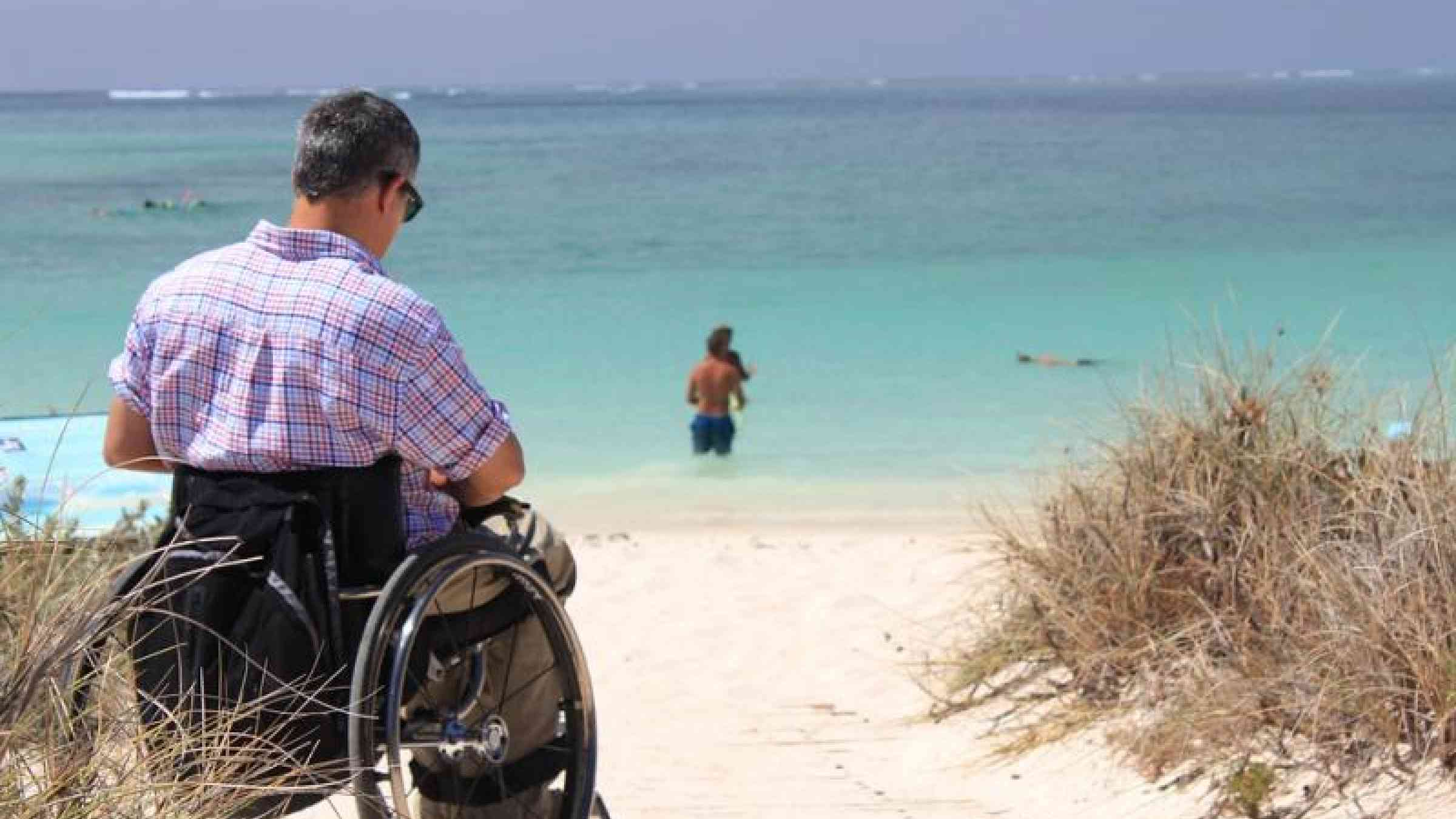Please help us improve PreventionWeb by taking this brief survey. Your input will allow us to better serve the needs of the DRR community.
Empowering Australians with disability to prepare for disasters

A whole of community approach to bushfire, flood and storms
A collaboration between the University of Sydney, NSW Emergency Services, and the health and disability sectors is raising awareness of the challenges people with disability face during natural disasters.
Minister for Police and Minister for Emergency Services, the Hon. Troy Grant MP and Disability Discrimination Commissioner Mr Alastair McEwin today launched a new toolkit designed to increase the resilience of people with disability to disaster and natural hazard emergencies.
Minister Grant said this ground-breaking all-hazards approach embeds emergency preparedness into everyday interactions between community health and disability support providers, and their clients.
“These programs have a really wide-reaching positive effect by empowering the entire community, and I am very pleased to help launch this vital piece of work,” Minister Grant said.
“The recent Tathra bushfire and Lismore floods are just two examples of how quickly natural disasters can devastate our communities,” said lead researcher Dr Michelle Villeneuve from the University of Sydney’s Centre for Disability Research and Policy.
“More than 18 per cent of Australians live with a disability and we have an ageing population, which means many people face challenges like mobility issues and power dependency during emergencies.
“The tool we have developed is critical to ensure no one ever gets left behind due to a lack of planning and preparation.”
Dr Villeneuve said the 2011 Japan earthquake and tsunami brought the issue to international attention, showing the death rate for people with disability was four times higher than that of the general population.
“Not involving people with disability in the disaster planning process leaves them vulnerable to a system that doesn’t understand their personal needs and experiences – our work aims to put them at the forefront,” said Dr Villeneuve.
Key features of person-centred emergency preparedness
Designed for use by disability and health services in collaboration with people with disability, the Person-Centred Emergency Preparedness toolkit includes a range of resources.
A user guide and case study videos step people through the information required to develop an emergency preparedness plan, and an interactive quiz can be used to check levels of preparedness over time.
The toolkit was developed through close consultation with the disability and health sectors with $190,000 funding from the NSW Government’s Community Resilience and Innovation Program, a jointly funded State and Commonwealth Natural Disaster Resilience Program initiative.
It was field-tested with community members, service providers and people with disability living in disaster-prone communities in the Mid North Coast of New South Wales.
Explore further
Please note: Content is displayed as last posted by a PreventionWeb community member or editor. The views expressed therein are not necessarily those of UNDRR, PreventionWeb, or its sponsors. See our terms of use
Is this page useful?
Yes No Report an issue on this pageThank you. If you have 2 minutes, we would benefit from additional feedback (link opens in a new window).